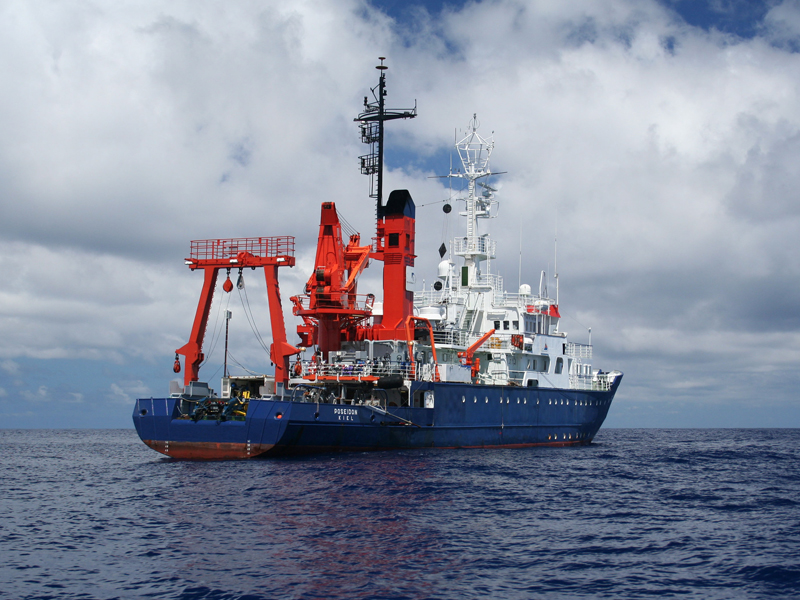POSEIDON POS494
- Area:
- Canary Islands, El Hierro
- Time:
-
04.02.2016 - 15.02.2016
- Institution:
- GEOMAR
- Chief scientist:
- Dietrich Lange
El Hierro is the youngest island of the Canary Islands Archipelago. It covers an area of 268 square kilometers with a maximum altitude of 1501 metres. For the last 500 years, no volcanic activity had been reported. But on October 10, 2011, a submarine volcanic erupted two kilometres south of the island, close to the village of La Restinga. Volcanic activity lasted until 5 March 2012. It was precedented by a three-months long period of tremors and earthquakes. Even today, seismic activity can still be detected on the island.
After the eruption, intensive research was carried out in the water column, as the new submarine volcano was considered to pose a significant threat for the island and its inhabitants. In order to better characterize the seismicity, twelve offshore and nine onshore seismic stations were deployed in February 2015. During the POSEIDON cruise POS494, the ocean bottom seismometers (OBS) will be recovered.
The German research submersible JAGO will be used for high-resolution mapping and documentation of the vent site and the local volcanic construction, investigations of the ongoing gas and hydrothermal fluid discharge, sampling of volcanic and hydrothermal deposits close to the vents as well as collection of water samples.
Standard ship-based echo-sounding will also be used to map any changes in bathymetry since the last surveys of the area to document changes in the landscape.
This work will complement research at GEOMAR on shallow submarine magmatic-hydrothermal systems worldwide, with previous cruises to sites in New Zealand, Iceland and in the eruption craters of Panarea island in the Mediterranean. Until now, the focus of this work has been on arc-related volcanoes and mid-ocean ridges. The site at El Hierro will provide an important additional case study of magmatic hydrothermal activity associated with hotspot volcanism, with major differences expected in volatile compositions, water-rock interactions, alteration styles and metal fluxes.
The work will be a cooperation with PLOCAN (Platforma Oceania de Canarias, www.plocan.eu) and ULPGC (University of Las Palmas de Gran Canaria, www.english.ulpgc.es) and GEOMAR under the Collaboration Framework Agreement in November, 2014. The work will be an extension of the Vulcano Project at ULPGC.



